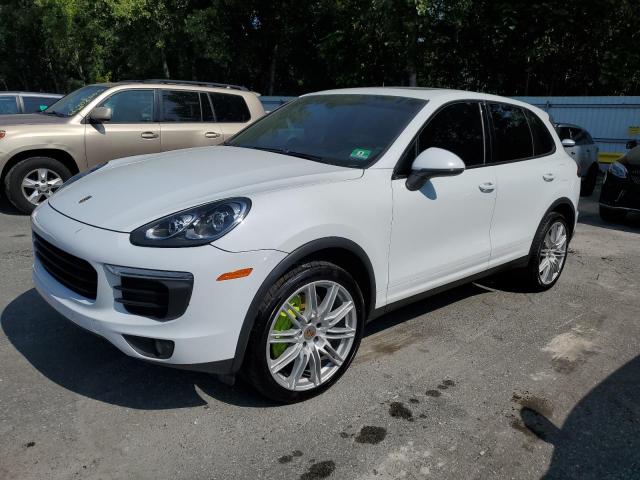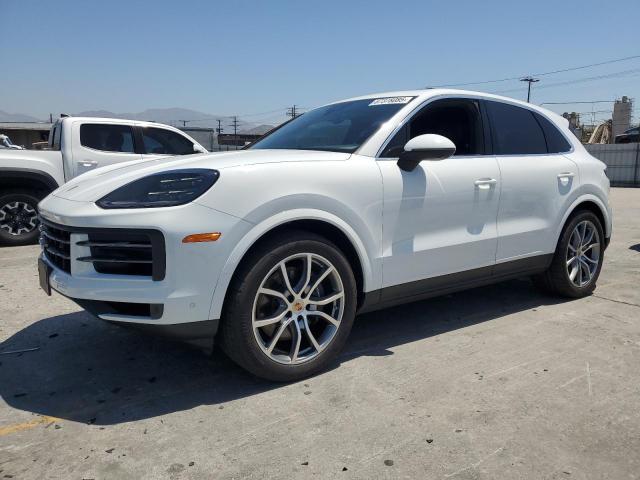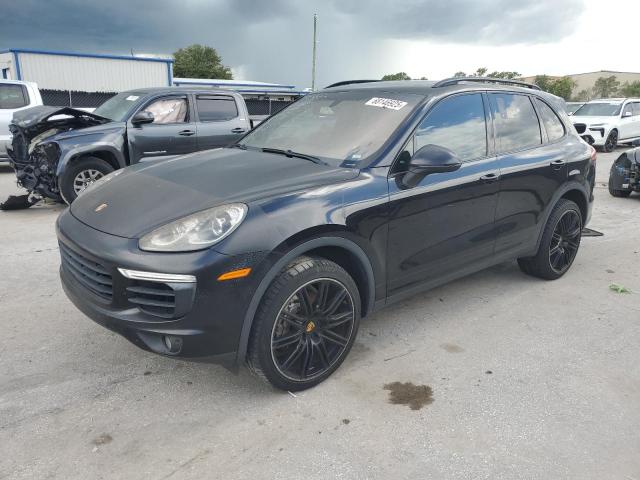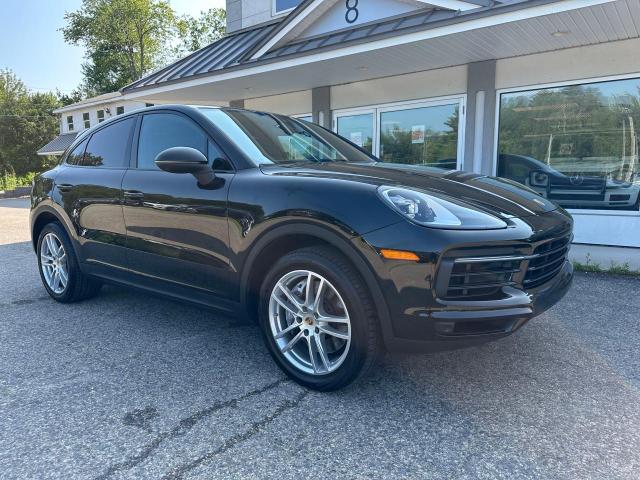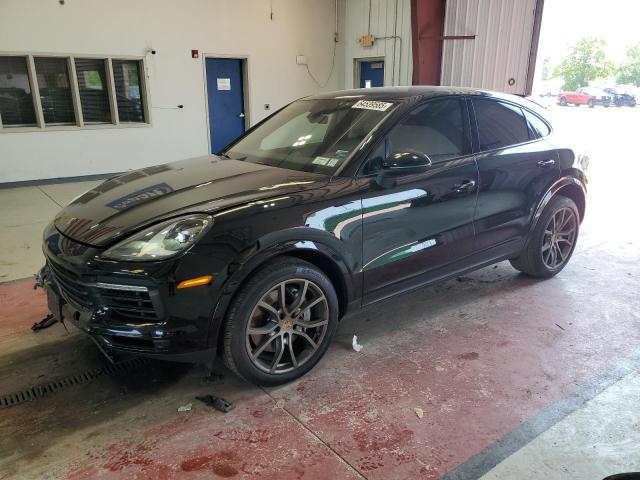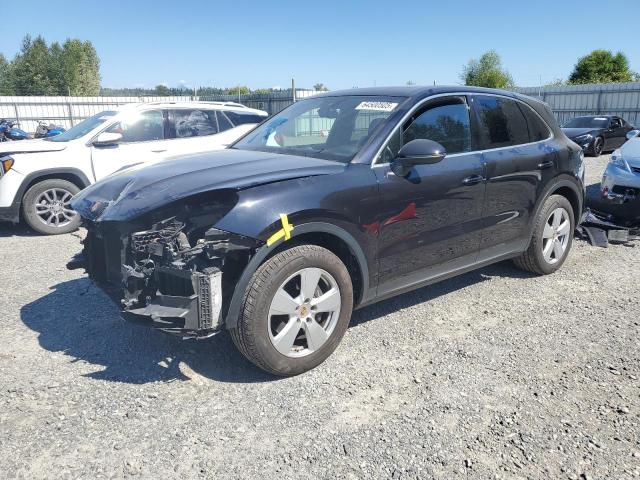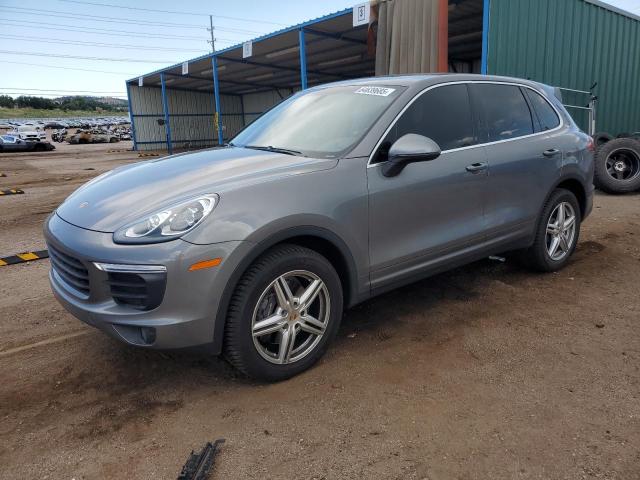2017 PORSCHE CAYENNE | WP1AB2A22HLA51972
Lot details
- Sale Date2025-06-21
- Lot Number42307298
- ACV20364 $
- Sale documentSalvage (Connecticut)
- LocationHartford (CT)
- Odometer105,909 miles (170,444 km)
- Primary DamageLEFT REAR
- SellerMAPFRE USA
Vehicle specifications
10
~$160,000
Engine: 4.8L Twin-Turbocharged V8
Torque: 800 Nm
0–100 km/h: ~4.1 s
The second-generation Porsche Cayenne Turbo S was not just a fast SUV—it was one of the fastest production SUVs in the world when it debuted. Powered by a 4.8-liter twin-turbocharged V8 producing 570 horsepower and 800 Nm of torque, it launched from 0 to 100 km/h in just 4.1 seconds—numbers once reserved for supercars. But more than just brute strength, the Cayenne Turbo S was about intelligent performance. With torque vectoring, active anti-roll stabilization, and carbon-ceramic brakes as standard, it offered not just speed, but control and composure in all conditions.
Handling was made razor-sharp thanks to Porsche Dynamic Chassis Control (PDCC), enabling flat cornering and high-speed confidence despite its nearly 2.3-ton curb weight. The steering was responsive and weighted, while the all-wheel-drive system distributed power precisely to maximize traction on both road and track. The 8-speed Tiptronic transmission delivered rapid shifts without sacrificing refinement, ensuring the Cayenne could transition from brutal acceleration to calm luxury cruiser with a single throttle lift.
What truly defined the Cayenne Turbo S was its ability to defy category. It wasn’t just a performance SUV—it was a Porsche in full character: focused, emotional, and engineered to thrill. Whether overtaking at 250 km/h on the Autobahn or carving through mountain passes, the Turbo S proved that practicality and passion could coexist without compromise. It closed the chapter on naturally aspirated V8s with a bang, becoming one of the last Porsche SUVs with a true motorsport soul.
Final Bid Porsche Cayenne (2017)
$10,300
$12,548
$16,025
Body Styles
The Cayenne was available solely as a 5-door SUV during this generation. Porsche emphasized sleekness and dynamic styling, refining the bulky first-generation design with smoother bodywork, a lower roofline, and sculpted sides. The facelift in 2014 brought sharper LED lighting, an updated front fascia, and revised taillights with a 3D effect.
Despite its SUV stance, the Cayenne retained a performance-oriented chassis with Porsche Active Suspension Management (PASM), optional air suspension, and torque vectoring. All models shared a long wheelbase for interior comfort, while top trims like the GTS and Turbo received model-specific bumpers, quad exhausts, and larger air intakes.
Model Name Meaning (Manufacturer)
The name “Cayenne” follows Porsche's tradition of using exotic or evocative names (e.g., Carrera, Macan, Panamera). “Cayenne” refers to the spicy red pepper, symbolizing power, sharpness, and flair — qualities Porsche sought to embed in its first SUV line. It signified that, despite being a family vehicle, the Cayenne was no dull daily driver.
Introduced in 2002, the Cayenne quickly became Porsche's best-selling model and financial backbone, allowing it to fund development of sports cars like the 918 Spyder and next-gen 911s.
Model Name Meaning (Languages)
The term “Cayenne” is used universally across markets and requires no translation. It conveys energy and heat — particularly in English, Spanish, and French-speaking countries. Its association with spice blends seamlessly with the performance character of the car, particularly in markets where SUVs are viewed as prestige statements.
Body & Interior Colors and Rims
The Porsche Cayenne (958 generation) marked a leap forward in the evolution of the luxury SUV, combining track-inspired performance with practical family utility. Its wide selection of exterior colors, interior trims, and wheels underscored Porsche’s commitment to bespoke luxury, customization, and driving emotion, even in an SUV platform.
The body color range balanced timeless elegance with bold individuality, offering finishes that complemented both the Cayenne’s muscular profile and premium character. Classic options such as Carrara White, Jet Black Metallic, Mahogany Metallic, and Rhodium Silver Metallic provided sophisticated, understated appeal. Sportier choices included Meteor Grey, Sapphire Blue, Carmine Red, and Purpurite Metallic, designed to highlight the Cayenne’s athletic proportions and wide stance. Porsche also offered special-order Paint to Sample (PTS) options through its Exclusive Manufaktur program, enabling highly personalized colors such as Oak Green Metallic, Amethyst Metallic, or Lava Orange. Later models, especially performance variants like the GTS, Turbo, and Turbo S, often featured gloss black exterior trim, body-colored wheel arch extensions, or contrasting black mirror caps for added aggression.
The interior of the Cayenne 958 generation offered an impressive level of material and color diversity, ranging from business-class restraint to bespoke luxury. Base models typically featured partial leather upholstery in Black, Luxor Beige, or Espresso, while higher trims introduced full leather packages with two-tone combinations like Black/Garnet Red, Espresso/Cognac, or Saddle Brown/Luxor Beige. Decorative trim options included brushed aluminum, piano black, carbon fiber, natural olive wood, and walnut root, allowing owners to tailor their cabin to either sporty or classic tastes. The SportDesign steering wheel, contrast stitching, leather-wrapped dash, and embossed headrests were common upgrades on more performance-oriented trims. The Cayenne GTS and Turbo variants often featured Alcantara headliners, carbon inlays, and Sport Chrono packages, reinforcing their motorsport-inspired identity within a luxury framework.
Wheels played a major visual and functional role in the Cayenne’s character. Entry-level models rode on 18-inch 5-spoke alloys, while S, Diesel, and Hybrid variants offered 19- and 20-inch designs with elegant, technical spoke patterns. The Cayenne GTS and Turbo came standard with 20- or 21-inch wheels, including designs like the 911 Turbo-style, SportEdition, or RS Spyder wheels, often in Satin Platinum, Jet Black Metallic, or Diamond Cut finishes. Many of these were lightweight forged alloys, contributing to improved handling and braking. High-performance models could also be equipped with center-lock-style wheel bolts, colored brake calipers (in red, yellow, or green depending on trim and brake type), and Porsche Ceramic Composite Brakes (PCCB) — signaling serious capability beneath the refined exterior.
Top Expensive Options
- Adaptive Air Suspension w/ PASM: ~$3,500
- Porsche Dynamic Chassis Control (PDCC): ~$4,000
- Burmester 3D Audio System: ~$5,500
- Porsche Ceramic Composite Brakes (PCCB): ~$8,000
- Sport Chrono Package: ~$2,500
- Carbon Fiber Interior Trim: ~$1,800
- Rear Seat Entertainment System: ~$3,300
- Panorama Roof System: ~$1,850
- Full Leather Package with Custom Stitching: ~$5,000+
- Porsche Dynamic Light System Plus (PDLS+): ~$1,400
vs Competitors
The Cayenne competed with the BMW X5 M / xDrive50i, Mercedes-Benz ML/GL/AMG, Range Rover Sport, and Jeep Grand Cherokee SRT. While rivals offered better off-road capability or lower prices, Porsche led in road dynamics — offering the most engaging handling, best steering feedback, and surprisingly nimble feel for its size.
The Turbo and Turbo S outperformed most SUVs of their time, even against the X5 M, while the GTS became a cult favorite for its balance of performance and usability. No other SUV from this era blended sports car DNA with family practicality as effectively.
Fun Fact
The 2015 Cayenne S E-Hybrid was the first plug-in hybrid SUV from a premium German brand, launching ahead of BMW and Mercedes. It also marked Porsche’s early investment in electrification — foreshadowing the Taycan and future Macan EV. Additionally, the 4.8L twin-turbo V8 in the Cayenne Turbo S was capable of launching the SUV from 0–100 km/h in under 4.1 seconds — faster than many 911s of the era — making it the fastest production SUV in the world at its debut.


